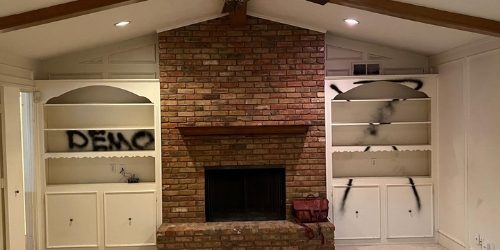Foundation issues can be a homeowner’s worst nightmare, especially in areas like Prosper, TX, where soil conditions and weather patterns can exacerbate structural problems. Addressing foundation repairs and structural reinforcements promptly is crucial to maintaining the integrity and safety of your home. This blog post delves into the importance of these repairs, common signs of foundation issues, and effective solutions to ensure your home remains stable and secure.
Understanding the signs of foundation problems and taking timely action can prevent extensive damage and costly repairs. Professional assessment and appropriate structural reinforcements are essential to maintaining the safety and value of your home.
Identifying Foundation Problems
Cracks in Walls and Floors
Signs of structural issues in a home can include horizontal and vertical cracks in walls, which may indicate shifting or settling. Cracks in the flooring are another potential red flag, often signaling foundation problems or uneven settling. Additionally, stair-step cracks in brickwork are a common indicator of structural stress, particularly in masonry buildings. These types of cracks should be carefully monitored and may require professional assessment to prevent further damage and ensure the safety of the structure.
Doors and Windows Misalignment
Signs of structural issues in a home can include doors and windows that stick or do not close properly, which may be due to shifting foundations or settling. Gaps around window frames can indicate movement in the structure, while misaligned doors may also point to underlying structural problems. These issues should not be ignored, as they can be early warnings of more serious foundation or wall stability concerns that may require professional intervention to address.
Uneven Floors
Sloping or sagging floors are a significant sign of potential structural issues within a home. When you notice noticeable dips or humps in the flooring, it could indicate foundation problems, shifting soil, or weakened support beams beneath the surface. Floors that feel bouncy, unstable, or uneven when walked on may point to damaged joists or inadequate support structures that need immediate attention. Ignoring these signs can lead to more severe problems, such as further deterioration of the foundation or even safety hazards
Causes of Foundation Issues
Soil Movement
Expansive clay soils that swell and shrink with moisture changes can put significant stress on a home’s foundation, leading to cracking and shifting over time. Poor soil compaction during construction can also contribute to foundation problems, as loose or improperly compacted soil may settle unevenly, causing the foundation to shift or sink. Additionally, erosion due to poor drainage can wash away supporting soil around the foundation, further destabilizing the structure. Addressing these underlying soil issues is essential for maintaining the long-term stability and safety of the home. Proper drainage, soil treatment, and reinforcement methods can help mitigate these risks.
Water Damage
Excessive moisture from plumbing leaks or poor drainage can lead to significant foundation problems, as the constant presence of water can weaken the soil supporting the foundation, causing it to shift or settle unevenly. Water pooling around the foundation is a common sign of poor drainage, which can further exacerbate these issues by allowing moisture to seep into the ground and destabilize the structure. Seasonal changes in groundwater levels, such as those caused by heavy rains or droughts, can also affect the soil’s ability to support the foundation, leading to cracks, settling, and other structural issues over time.
Tree Roots
Roots growing under the foundation can create significant structural problems as they expand and displace the soil. Trees planted too close to the house are often the main culprits, with their roots spreading beneath the foundation and causing uneven settling or cracks in the structure. Over time, these roots can cause soil displacement, leading to shifts in the foundation and potentially compromising the integrity of the building. It’s essential to manage landscaping carefully, ensuring that trees are planted at a safe distance from the home to prevent these issues from occurring. Regular monitoring and root barrier installations can also help protect the foundation from root-related damage.
Foundation Repair Methods
Slabjacking
Injecting a grout mixture beneath the slab, also known as slab jacking or mudjacking, is a common method used to lift and level sunken concrete. This process is particularly suitable for addressing minor settling issues, as the grout mixture fills voids beneath the slab and raises it back to its original position. It is a quick and cost-effective solution compared to more extensive foundation repairs, making it an appealing option for homeowners dealing with uneven surfaces or slight foundation settling. Properly executed, this method can restore stability to the slab and prolong the life of the foundation.
Piering
Installing steel piers deep into the ground is a robust solution for stabilizing foundations that have experienced significant settling or shifting. These piers are driven into stable soil layers or bedrock, offering a solid anchor for the structure above. This method is particularly effective in situations where the foundation has experienced substantial movement, as the steel piers can support and redistribute the weight of the building. By providing long-term stability, this approach ensures that the foundation remains secure and minimizes the risk of future settling or shifting.
Helical Piers
Using screw-like piers to anchor the foundation is an effective solution for stabilizing homes in areas with unstable soil. These helical piers are twisted into the ground like screws, reaching stable soil or bedrock. This method offers excellent support and is minimally invasive, making it an attractive option for homeowners who want to avoid extensive excavation. Helical piers are highly effective in preventing further settlement or shifting, ensuring the long-term stability of the foundation, even in challenging soil conditions.
Structural Reinforcements
Steel Beams
Installing steel beams to support weakened areas is a common method to reinforce structural integrity. Steel beams provide additional strength and stability, especially when load-bearing walls are removed or compromised. This method is often used in conjunction with other repair techniques to ensure the overall safety and durability of the structure. Proper installation by professionals is essential to ensure the beams are placed correctly and effectively support the weakened areas.
Wall Anchors
Installing anchors is a practical solution for stabilizing bowing or leaning walls, particularly in basements where lateral pressure from soil or moisture can cause structural issues. These anchors are inserted into the wall and connected to a stable point outside, helping to pull the wall back into alignment. Over time, the anchors can be adjusted to provide continued support and prevent further movement, making them an effective long-term solution for maintaining the stability of walls under pressure.
Carbon Fiber Strips
Applying carbon fiber strips is an effective method for reinforcing cracked or bowing walls. These strips are both lightweight and incredibly strong, making them a durable solution for wall stabilization. The installation process is non-invasive and relatively quick, involving the bonding of carbon fiber to the wall surface, where it helps prevent further movement. This method is particularly useful in situations where minimal disruption to the home is preferred, while still providing substantial structural reinforcement.
Answering Common Questions
Q1 How do I know if my foundation needs repair?
A1 Look for signs such as cracks in walls and floors, misaligned doors and windows, and uneven floors. A professional inspection can provide a definitive assessment.
Q2 Can foundation issues be fixed permanently?
A2 Yes, with the right repair methods and preventative measures, foundation issues can be effectively addressed and prevented from recurring.
Q3 How much do foundation repairs cost?
A3 The cost varies depending on the extent of the damage and the chosen repair method. It’s best to get multiple quotes from reputable contractors.
The Impact of Climate on Foundation Stability
Climate plays a significant role in foundation stability. In Prosper, TX, the hot, dry summers and occasional heavy rains can cause soil to expand and contract, leading to foundation movement. Understanding these climatic influences can help homeowners take proactive measures to protect their foundations.
Seeking Expert Advice
Foundation issues are complex and require professional expertise. If you suspect foundation problems, it’s essential to seek advice from a qualified structural engineer or foundation repair specialist. They can provide an accurate diagnosis and recommend the best course of action to ensure your home’s stability and safety.
Conclusion
Addressing foundation repairs and structural reinforcements in Prosper, TX, is essential for maintaining the safety and longevity of your home. By recognizing the signs of foundation issues early and taking proactive measures, you can prevent extensive damage and costly repairs. Whether it’s through professional inspections, implementing effective repair methods, or adopting preventative strategies, ensuring the stability of your foundation is a critical investment in your home’s future. Don’t hesitate to seek expert advice to safeguard your property and provide peace of mind for years to come.
Visit us at Pristine Luxury Remodeling
For more information and personalized guidance visit us at Pristine Luxury Remodeling, We specialize in providing exceptional remodeling services that elevate your space into a masterpiece of luxury.







